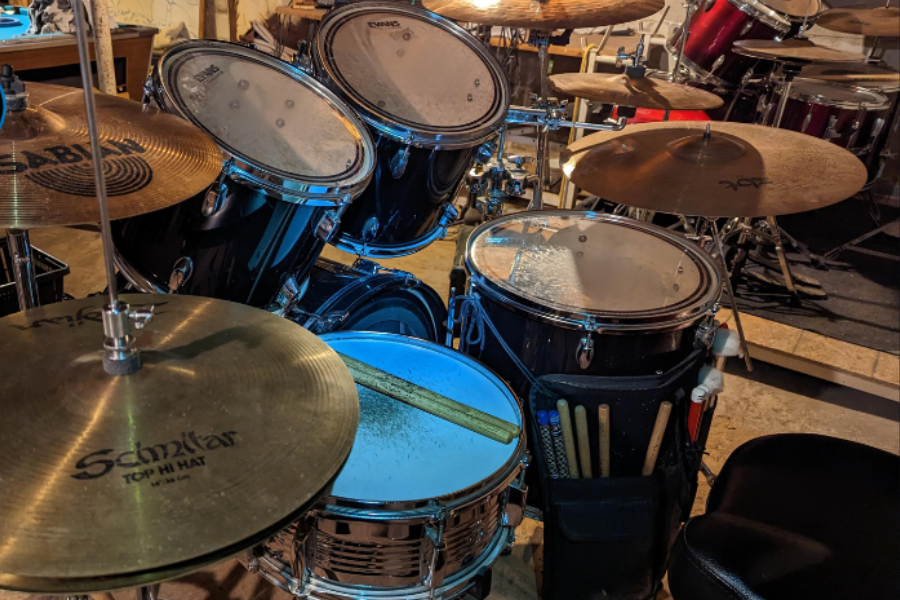The term “scimitar drum” may not be widely recognized, yet it carries significant meaning across various contexts. This article offers a comprehensive exploration of the scimitar drum, delving into its historical roots, cultural significance, and influence on music and art.
By examining the meaning of the scimitar drum from multiple perspectives, we aim to provide a deeper understanding that goes beyond existing literature. We will also address frequently asked questions and share unique insights to enhance knowledge of this intriguing subject.
What Is the Meaning of a Scimitar Drum?
Definition and Origin
A scimitar drum is a distinctive percussion instrument characterized by its unique shape, which resembles a scimitar—a curved, single-edged sword traditionally associated with the Middle East and North Africa. The name of the drum reflects both its visual likeness and the cultural meanings associated with it.
Historical Background
The origins of the scimitar drum are deeply intertwined with ancient civilizations, particularly those from the Middle East, North Africa, and South Asia. Over centuries, its design and construction methods have evolved, influenced by various cultural practices and materials.
The Significance of the Scimitar Drum in Music
Traditional Uses
Traditionally, the scimitar drum plays a dual role in music, contributing both rhythm and melody. It is utilized in various musical genres, including ceremonial, religious, folk, and classical music. The drum’s unique sound arises from its distinctive shape and the materials chosen for its construction.
Modern Interpretations
In contemporary music, the scimitar drum has found new avenues of expression. Musicians across genres incorporate the drum into modern compositions, experimenting with its sound and exploring its diverse applications. Its rich history and tonal qualities make it a valuable addition to various musical contexts.
Cultural and Symbolic Meanings
Symbolism in Different Cultures
The scimitar drum embodies various symbolic meanings in different cultures. In some traditions, it represents strength and bravery, while in others, it serves as a symbol of cultural heritage and identity. The drum’s resemblance to the scimitar sword further enhances its symbolic significance.
Role in Ceremonies and Rituals
In certain cultures, the scimitar drum is employed in ceremonies and rituals to evoke spiritual connections or to commemorate significant events. Its role in these contexts underscores its importance beyond mere musical performance, emphasizing its cultural and spiritual significance.
Construction and Design
Materials and Craftsmanship
Crafting a scimitar drum involves meticulous selection of materials and expert craftsmanship. Traditional drums are typically made from wood, metal, and animal skins, each contributing to the instrument’s unique sound and appearance. Modern versions may utilize synthetic materials to enhance durability and sound quality.
Design Features
The scimitar drum’s design is notably characterized by its curved shape, which mimics the scimitar sword. This distinctive form influences the drum’s resonance and tonal properties, making it unlike other percussion instruments. Variations in size, shape, and decoration often reflect cultural and regional influences.
The Impact of the Scimitar Drum in Art and Performance
Visual Representation
In the realm of art, the scimitar drum frequently appears as a representation of cultural heritage and historical importance. Artists may depict the drum in various forms, including paintings and sculptures, showcasing its significance in cultural narratives and expressions.
Performance and Influence
The influence of the scimitar drum extends beyond music into the performing arts. Its unique sound and aesthetic make it a compelling element in theatrical and dance performances. The drum enhances the overall experience, highlighting its versatility and impact on artistic expression.
FAQs
What is the history of the scimitar drum?
The scimitar drum has a rich history, influenced by ancient civilizations primarily in the Middle East, North Africa, and South Asia. Over time, it has evolved through various materials and construction techniques reflective of regional practices.
How is the scimitar drum used in modern music?
Today, the scimitar drum is integrated into various genres, with musicians experimenting with its sound and incorporating it into contemporary compositions, demonstrating its adaptability and lasting relevance.
What materials are used to make a scimitar drum?
Traditional scimitar drums are crafted from wood, metal, and animal skins, while modern iterations may include synthetic materials. The choice of materials significantly impacts the drum’s sound and durability.
What cultural significance does the scimitar drum hold?
The scimitar drum is rich in cultural meanings, symbolizing strength, bravery, and cultural heritage. Its use in rituals and ceremonies further emphasizes its significance within diverse traditions.
How does the scimitar drum differ from other drums?
The scimitar drum is unique due to its curved shape, akin to the scimitar sword. This design influences its resonance and tonal qualities, distinguishing it from other percussion instruments.
Conclusion:
The scimitar drum transcends being a mere musical instrument; it embodies a rich tapestry of history and cultural significance that spans centuries. Its distinctive design, symbolic meanings, and varied applications in music and art make it a captivating subject. By exploring the meaning of the scimitar drum in detail, we cultivate a deeper appreciation for its role in cultural heritage and its influence on modern artistic expressions. Whether featured in traditional ceremonies or contemporary performances, the scimitar drum continues to captivate and inspire, bridging the past and present through its enduring legacy.
Stay connected with essential tools and updates at MySDMC SSO.


Leave a Reply